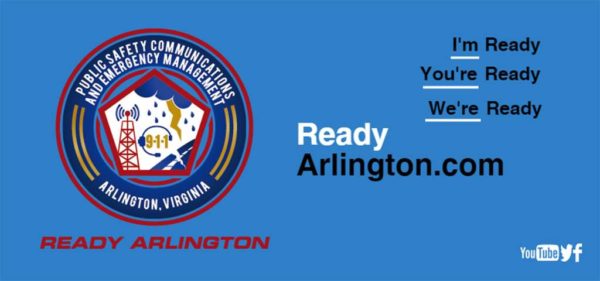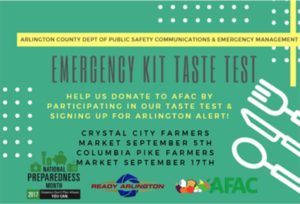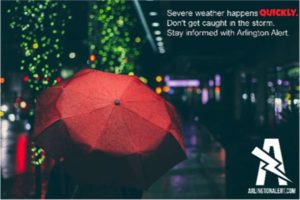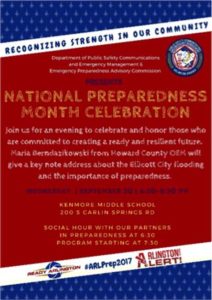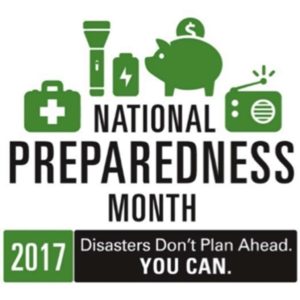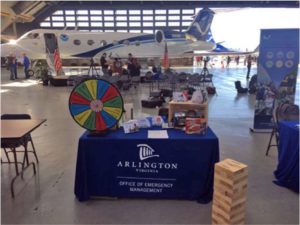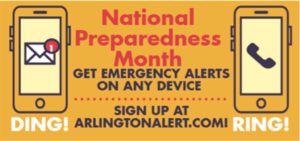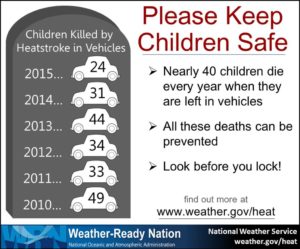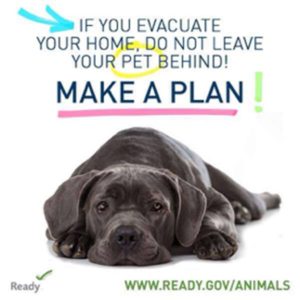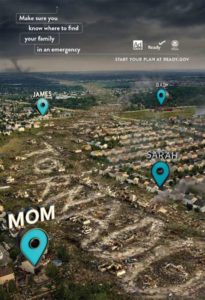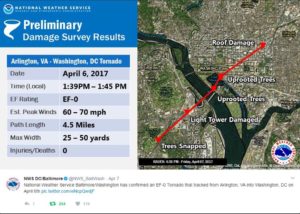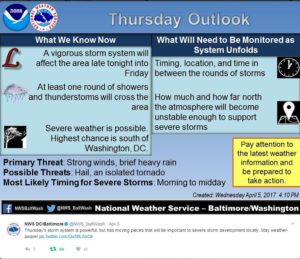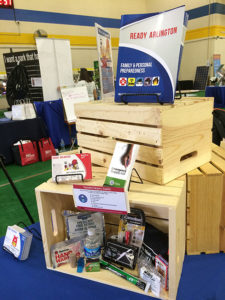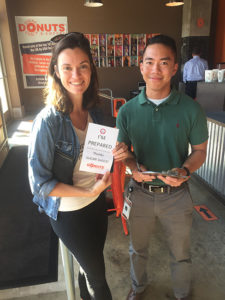This biweekly column is sponsored by the Arlington County Department of Public Safety Communications & Emergency Management.
Hurricanes are on everyone’s mind lately. The flooding caused by Hurricane Harvey has devastated the Houston area of Texas. Hurricane Irma has just come through and flooded many areas in Florida and caused catastrophic damage in Puerto Rico and the U.S Virgin Islands.
Harvey is already ranked as one of the costliest disasters and Irma is one of the most powerful hurricanes in history. There has been a lot of chatter: “What if that ever happens in this area?” The fact is, it’s already happened pretty close to home.
 Last July, a flash flood wreaked havoc in Ellicott City, Maryland. Over six inches of rain fell within two hours. Three people lost their lives, 90 businesses were impacted and hundreds of cars were destroyed; almost 100 residents were displaced from their homes and many were left unemployed.
Last July, a flash flood wreaked havoc in Ellicott City, Maryland. Over six inches of rain fell within two hours. Three people lost their lives, 90 businesses were impacted and hundreds of cars were destroyed; almost 100 residents were displaced from their homes and many were left unemployed.
Since then, 93 percent of businesses have reopened and 72 percent of those displaced have been able to return to their homes.
Prepare Now!
The first step to being prepared is knowing the risks. This could happen in Arlington and it could happen at any time, with little to no warning. Almost 65 percent of families are not prepared for a disaster. It’s National Preparedness Month and there is no better time to get prepared.
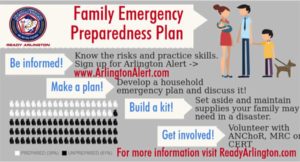 Start today by making a plan & building a Kit. Taking these steps now is essential to being prepared for a disaster. You may not have time to pack a bag or call family members to coordinate when an event happens. If you know where to go and what to do before something happens, then you can just grab and go to safety.
Start today by making a plan & building a Kit. Taking these steps now is essential to being prepared for a disaster. You may not have time to pack a bag or call family members to coordinate when an event happens. If you know where to go and what to do before something happens, then you can just grab and go to safety.
Interested in knowing more?
On September 20, we will be hosting our National Preparedness Month Celebration, to honor those in our community who have helped us be more prepared for a disaster.
 We’ll be hosting a social hour with several of our partners in preparedness followed by a key note address from Maria Bernadzikowski, Howard County OEM. Maria will be discussing the Ellicott City flooding and how important it is to prepare before a disaster strikes.
We’ll be hosting a social hour with several of our partners in preparedness followed by a key note address from Maria Bernadzikowski, Howard County OEM. Maria will be discussing the Ellicott City flooding and how important it is to prepare before a disaster strikes.
Maria Bernadzikowski joined the Center for Health and Homeland Security as a Senior Policy Analyst in November 2016 and began working for the Howard County Office of Emergency Management on the Disaster Recovery Team (Ellicott City Flooding, July 2016.)
She transitioned as the Recovery Coordinator for the county’s efforts in March 2017 and has recently been tasked with creating their Outreach Program. Ms. Bernadzikowski is a graduate of St. John’s University (BA) and Tulane’s School of Public Health and Tropical Medicine, where she earned a Master of Public Health with a concentration in Disaster Management.
Ms. Bernadzikowski has worked on establishing community outreach programs, preparedness and recovery plans, exercise and training, and volunteer programs throughout Fairfax, Virginia, New Orleans, Louisiana and Léogâne, Haiti. She specializes in outreach to individuals with access and functional needs.
 Come by Kenmore Middle School, 200 S. Carlin Springs Road, from 6:30-8:30 p.m. next week and learn more about how you can help us and yourself better prepare Arlington for a disaster.
Come by Kenmore Middle School, 200 S. Carlin Springs Road, from 6:30-8:30 p.m. next week and learn more about how you can help us and yourself better prepare Arlington for a disaster.
Get connected!
As always, visit ReadyArlington.com or follow us on Facebook and Twitter for more information, and make sure to sign up for Arlington Alert.


